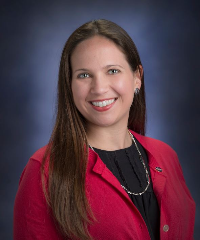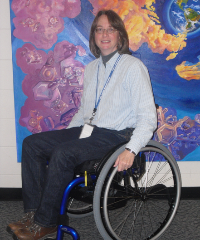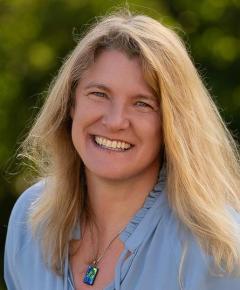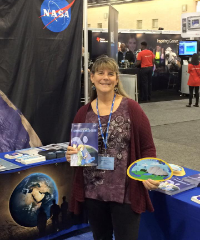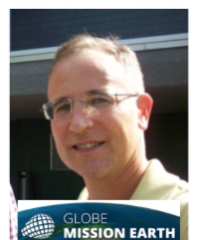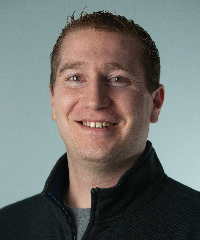Community Blogs
Community Blogs
Discover how the GLOBE community is engaging in all things GLOBE through the community blog posts below.
Learn how to create a GLOBE community blog post.
Filter By:
Blogs List
Images taken by Wilson Bentley and property of the Jericho Historical Society.
Did you know that clouds have names? As the title of the GLOBE Elementary book says, clouds do have names. Those names describe the altitude and the appearance of the cloud. Cumulus means pile in Latin, so the name is used to describe low puffy clouds in the sky. Cirrus means locks of hair, and is used to describe those thin wispy clouds found high up in the sky. Some people think that nimbus is a type of cloud, but it is not. It is an affix, or a word that works as a prefix or a suffix. ...
Read More »
Posted in:
Curriculum:
ASSESSMENT AND EVALUATION
GLOBE Science Topics:
BACKYARD SCIENCE
Investigation Areas:
ATMOSPHERE
Learning Activities:
ATMOSPHERE AND CLIMATE
News Topics:
COMMUNITY LETTERS
Primary Audience:
ALUMNI
Lectures, lessons, and learning opportunities of all kinds are available online these days… luckily, air quality investigations can be, too! Publically available sources of air quality data, which can be accessed any time and anywhere, can be used in conjunction with or in lieu of the GLOBE Aerosols Protocol for students and teachers participating in the US Air Quality Student Research Campaign. This blog post will introduce a website which can be used to conduct air quality investigations with a ground-based instrument, called the PurpleAir.
The PurpleAir is a small, commercially ...
Posted in:
Lectures, lessons, and learning opportunities of all kinds are available online these days… luckily, air quality investigations can be, too! Publically available sources of air quality data, which can be accessed any time and anywhere, can be used in conjunction with or in lieu of the GLOBE Aerosols Protocol for students and teachers participating in the US Air Quality Student Research Campaign. This blog post will introduce a website called AerosolWatch, an online access point for satellite-based observations of aerosols, and factors that affect air quality (such as smoke and dust). ...
Posted in:
The big announcement this month was that we made the difficult decision to cancel the 2021 Student Research Symposia. We have some other activities that we will working on instead, which will support the IVSS and SRS into the future! In other news, I attended a couple virtual multi-day meetings and had lots of resources cross my desk. Some of those are listed below. I look forward to 2021 and the close of 2020. It has been a rough year but kindness abounds and teachers are amazing in supporting students throughout this public health crisis – they inspire me each day. Peace to all of the ...
Posted in:
Ever wonder what it might be like to work for NASA? This year at the American Geophysical Union (AGU) Annual Meeting (kind of like a huge IVSS as it is virtual this year), NASA shared a wealth of resources to help anyone interested in working with or for NASA to "find their place"! Take a look at this site and explore the myriad of amazing opportunities and programs that exist for a wide variety of different audiences. These programs range from research and learning opportunities to being engaged by being a part of The GLOBE Program! So check out the " Find Your Place " ...
Posted in:
Curriculum:
EDUCATION RESEARCH
LANGUAGE CULTURE AND ARTS
SCIENCE AND MATH
TECHNOLOGY
STEM
Field Campaigns:
FLEXE
SCRC
SCUBANAUTS
SEASONS AND BIOMES
WATERSHEDS
CARBON CYCLE
GGIC
SCRC - PHASE 1
SCRC - PHASE 2
SMAP
EL NIÑO
SURFACE TEMPERATURE
GPM
GLOBE Science Topics:
BACKYARD SCIENCE
CLIMATE
CLIMATE CHANGE
DATA INCLUDED
GENERAL SCIENCE
GENERAL SCIENCE @ES
EARTH AS A SYSTEM
EARTH SYSTEM SCIENCE
SCIENTIST SKILLS
MEETINGS/CONFERENCES
GLOBE Working Groups:
EVALUATION WORKING GROUP
SCIENCE WORKING GROUP
EDUCATION WORKING GROUP
TECHNOLOGY WORKING GROUP
Investigation Areas:
ATMOSPHERE
HYDROSPHERE
EARTH AS A SYSTEM
PEDOSPHERE (SOIL)
BIOSPHERE
Learning Activities:
ATMOSPHERE AND CLIMATE
EARTH AS A SYSTEM
HYDROLOGY
LAND COVER/BIOLOGY
SOIL
News Topics:
MEETINGS
SCRC RESEARCH
TRAINING
VIRTUAL SCIENCE FAIR
Primary Audience:
ALUMNI
COUNTRY COORDINATORS
PARTNERS
SCIENTISTS
STUDENTS
TEACHERS
TRAINERS
Student Research Reports:
STANDARD RESEARCH REPORT
INTERNATIONAL VIRTUAL SCIENCE SYMPOSIUM REPORT
U.S. STUDENT RESEARCH SYMPOSIA (SRS)
MISSION EARTH REPORT
MISSION MOSQUITO REPORT
Teacher's Guide:
GRADE LEVELS
INVESTIGATION AREA DOCUMENTS
It snowed at my house in Michigan last week, the first week of December 2020. I love snow and I really like to see how snow affects the surface temperature. Between 60 and 80 mm of snow was on the ground. I took surface temperature observations as part of the Urban Heat Island Student Research Campaign. I wanted to show what you could do by yourself at your house if you have an infrared thermometer.
My two sites are my backyard which is grass and the gravel driveway in the front of our house. The backyard has a line of Black Spruce trees just south of where I am standing in the ...
Posted in:
Field Campaigns:
SURFACE TEMPERATURE
Did you know that your pace is a vital part of taking observations of tree height and land cover? A pace is a unit of length consisting either of one normal walking step, or of a double step, returning to the same foot, your dominant foot. Pacing Image above courtesy of Rothwell-Osnabruch K-12 School - Ontario, Canada The NASA GLOBE Observer Trees Tool uses your height to estimate your step length, which it then uses to estimate the distance to the tree, but you can also measure your pace directly, which will make your tree height measurements more accurate. Want to learn ...
Posted in:
WOOHOO! It’s time to celebrate! The NASA GLOBE Observer just had its 25,000th citizen science tree height observation. The observation came in on November 30, 2020 from Corvallis, Oregon. Since the release of the NASAGO Trees Tool on March 26, 2019, there has been an average of 40 tree height observations taken per day across the GLOBE Program participant countries.
Do you want to take tree height observations too? Check out https://observer.globe.gov/do-globe-observer/trees . Your tree height observations are so important to science research and exploration:
- Tree ...
Posted in:
Scientists are wondering what is happening over Antarctica and where are the noctilucent clouds. Noctilucent clouds or polar mesospheric clouds are the highest occurring cloud types (form about 50 miles or 80 Km above the Earth's surface). They form in the Mesosphere and are thin clouds made up of ice crystals that form from left over fine dust from meteors. Because they are so high up in the sky, you see them when the sun is low or almost nighttime. The form during the summer months over the north and south poles. That is when it is coldest that high up in the sky ( in the mesosphere ...
Posted in:
GLOBE Science Topics:
CLIMATE
CLIMATE CHANGE
Investigation Areas:
ATMOSPHERE
EARTH AS A SYSTEM
Primary Audience:
ALUMNI
COUNTRY COORDINATORS
PARTNERS
SCIENTISTS
STUDENTS
TEACHERS
TRAINERS
Fall is a whirlwind of virtual meetings! We had the GLOBE
North American Regional Meeting in mid-October and I
attended some of the sessions of the GLOBE
Europe and Eurasia Regional Meeting . I guess that is one
positive from the move to virtual meetings; it opens the
opportunity to attend if you cannot travel. Some things that came
across my desk this month…
Grant opportunity for Maryland schools: https://cbtrust.org/grants/environmental-education/
National Monitoring
Conference (virtual) April 19-24, 2021 ...
Posted in:
The newest satellite to monitor global sea level is ready for its journey into space. Sentinel-6 Michael Freilich, the latest in a series of spacecraft designed to monitor the global ocean, is scheduled to launch on Saturday, Nov. 21. Will you be watching?
Sentinel-6 Michael Freilich , the latest in a series of spacecraft designed to monitor our oceans, is scheduled to launch from Vandenberg Air Force Base in central California on Saturday, Nov. 21, 2020. The satellite will be followed in 2025 by its twin, Sentinel-6B. Together, the pair is tasked with extending our nearly ...
Posted in:
Curriculum:
EDUCATION RESEARCH
SCIENCE AND MATH
TECHNOLOGY
STEM
Field Campaigns:
SEASONS AND BIOMES
WATERSHEDS
EL NIÑO
GPM
GLOBE Science Topics:
CLIMATE
CLIMATE CHANGE
DATA INCLUDED
GENERAL SCIENCE
EARTH AS A SYSTEM
EARTH SYSTEM SCIENCE
SCIENTIST SKILLS
GLOBE Working Groups:
SCIENCE WORKING GROUP
EDUCATION WORKING GROUP
TECHNOLOGY WORKING GROUP
Investigation Areas:
ATMOSPHERE
WATER VAPOR
EARTH AS A SYSTEM
PRECIPITATION
WATER TEMPERATURE
GREEN-UP / GREEN-DOWN
LAND COVER CLASSIFICATION
Learning Activities:
S2: WHAT ARE SOME FACTORS THAT AFFECT SEASONAL PATTERNS?
S4: MODELING THE REASONS FOR SEASONAL CHANGE
S5: SEASONAL CHANGE ON LAND AND WATER
LC2: REPRESENTING THE STUDY SITE IN A DIAGRAM
LC3: USING GRAPHS TO SHOW CONNECTIONS
WE'RE ALL CONNECTED: EARTH SYSTEM INTERACTIONS
S3: HOW DO SEASONAL TEMP PATTERNS VARY AMONG DIFFERENT WORLD REGIONS?
WATER WALK
MODEL A CATCHMENT BASIN
PRACTICING YOUR PROTOCOLS
WATER DETECTIVES
MODEL YOUR WATER BALANCE
MEASURE UP
WATER WONDERS
Primary Audience:
ALUMNI
COUNTRY COORDINATORS
PARTNERS
SCIENTISTS
STUDENTS
TEACHERS
TRAINERS
Student Research Reports:
STANDARD RESEARCH REPORT
U.S. STUDENT RESEARCH SYMPOSIA (SRS)
MISSION EARTH REPORT
MISSION MOSQUITO REPORT
Even with the pandemic, participation the campaign has been good. Although the number of schools participating and the total number of observations was down from last year, it was still a nice number of each. So far this fall (Northern Hemisphere) spring (Southern Hemisphere) there have been over 3,500 observations from 135 sites (70 schools) across the world. Please see the list below. There are a number of schools in Saudi Arabia with over 100 observations. We also have observations from Brazil and an area of India where there are six new schools taking part in the urban heat island ...
Posted in:
Field Campaigns:
SURFACE TEMPERATURE
Santa Fe Indian School Café Scientifique presents Marilé Colón Robles, a NASA scientists to share how you can become a citizen scientist and help NASA
Learn how to do cloud observations with: Marilé Colón Robles, Project Scientist for NASA Globe Clouds
CLICK HERE TO REGISTER
Café Descriptio n:
Marilé Colón Robles, Project Scientist for NASA GLOBE Clouds Science Systems and Applications, Inc. will be presenting information about cloud and aerosol data that NASA uses and how you as a citizen scientist can help in the collection of this data.
Please register to the event ...
Posted in:
Curriculum:
EDUCATION RESEARCH
LANGUAGE CULTURE AND ARTS
SCIENCE AND MATH
STEM
GLOBE Science Topics:
BACKYARD SCIENCE
CLIMATE
CLIMATE CHANGE
GENERAL SCIENCE
EARTH AS A SYSTEM
EARTH SYSTEM SCIENCE
SCIENTIST SKILLS
Learning Activities:
ATMOSPHERE AND CLIMATE
News Topics:
CALENDAR
Primary Audience:
STUDENTS
septiembre/octubre/noviembre 2020
Nuevos recursos disponibles
Gracias a nuestra comunidad de nubes, el reto comunitario de nubes 2020 fue un gran éxito al mostrar cómo la ciencia es mejor juntos. Recibimos excelentes fotografías y obras de artes de los participantes, algunas de las cuales se destacaron en el video de agradecimiento.
Si no pudistes participar del reto o quieres seguir trabajando en él, visita la página de la guía para familias de nubes GLOBE para obtener los recursos. Encontrarás vídeos sobre la ciencias de nubes (inglés) y ...
Posted in:
Curriculum:
STEM
EDUCATION RESEARCH
SCIENCE AND MATH
Event Topics:
CAMPAIGNS AND PROJECTS (IOPS, ETC)
OTHER
COMPETITIONS
GLOBE Science Topics:
EARTH SYSTEM SCIENCE
GENERAL SCIENCE
GENERAL SCIENCE @ES
CLIMATE CHANGE
DATA INCLUDED
BACKYARD SCIENCE
CLIMATE
EARTH AS A SYSTEM
SCIENTIST SKILLS
GLOBE PROTOCOLS
Investigation Areas:
ATMOSPHERE
EARTH AS A SYSTEM
Learning Activities:
EARTH AS A SYSTEM
ATMOSPHERE AND CLIMATE
News Topics:
COMMUNITY LETTERS
Primary Audience:
PARTNERS
SCIENTISTS
ALUMNI
COUNTRY COORDINATORS
TRAINERS
TEACHERS
STUDENTS
Student Research Reports:
U.S. STUDENT RESEARCH SYMPOSIA (SRS)
INTERNATIONAL VIRTUAL SCIENCE SYMPOSIUM REPORT
STANDARD RESEARCH REPORT
Brian Campbell here.
I just wanted to share, with every participant on the Trees Around the GLOBE Student Research Campaign, that NASA has released two new amazing videos related to trees, tree height and tree research.
Video 1
“An unexpectedly large count of trees in West African Sahara and Sahel,”
Released on 16 October 2020
This visualization focuses on the Dryer areas of the globe that do not have forests are sometimes discounted for their contribution to the global biome in climate models and other prediction systems. However, this research has shown that over ...
Posted in:
Did you know that very soon, a new Earth-observing satellite will join the fleet of satellites that are monitoring the health of our home planet? The launch of the joint U.S.- European Sentinel-6 Michael Freilich satellite is set for November 10! Right now it is undergoing final testing at Vandenberg Air Force Base in California, and will be sent aloft on a Falcon 9 rocket. Once it is in orbit, about 1,336 km/830 miles above Earth's surface, its task will be to collect sea level measurements with an accuracy of a few centimeters (for a single measurement) for more ...
Posted in:
Curriculum:
STEM
SCIENCE AND MATH
TECHNOLOGY
Event Topics:
CAMPAIGNS AND PROJECTS (IOPS, ETC)
SCIENCE SYMPOSIA AND FAIRS
Field Campaigns:
SEASONS AND BIOMES
EL NIÑO
GPM
GLOBE Science Topics:
EARTH SYSTEM SCIENCE
CLIMATE
EARTH AS A SYSTEM
SCIENTIST SKILLS
GLOBE Working Groups:
EDUCATION WORKING GROUP
Investigation Areas:
ATMOSPHERE
EARTH AS A SYSTEM
News Topics:
CALENDAR
Primary Audience:
PARTNERS
SCIENTISTS
ALUMNI
TRAINERS
COUNTRY COORDINATORS
TEACHERS
STUDENTS
Student Research Reports:
U.S. STUDENT RESEARCH SYMPOSIA (SRS)
MISSION EARTH REPORT
INTERNATIONAL VIRTUAL SCIENCE SYMPOSIUM REPORT
Happy Fall! This is certainly not the typical beginning of the academic year we had hoped for, but I hear amazing things about GLOBE teachers across the country making it work remotely, through in-person hybrids and for some, completely in-person. I hope you find little tidbits here that you can use. Stay safe and stay well friends!
Resources that came skidding across my desk (aka my dining room table) this month:
The STEM for All Multiplex theme of the month was “Leveraging Authentic Data Across STEM Curricula.” Follow the link to see the blog post, playlist and the ...
Posted in:
Curriculum:
STEM
LANGUAGE CULTURE AND ARTS
SCIENCE AND MATH
Event Topics:
WEBINARS
CAMPAIGNS AND PROJECTS (IOPS, ETC)
SCIENCE SYMPOSIA AND FAIRS
GLOBE Science Topics:
SCIENTIST SKILLS
MEETINGS/CONFERENCES
CLIMATE
News Topics:
VIRTUAL SCIENCE FAIR
MEETINGS
VIDEO
test
Posted in:
September/October/November 2020
Cloud Challenge Resources Available
Thanks to our cloud community, the 2020 Community Cloud Challenge was a great success showing how Science is Better Together! We received some great photos and artwork from participants, some of which were highlighted in the thank you video .
If you missed the challenge or want to keep working on it, visit the GLOBE Clouds Family Guide page for the resources. You will find videos about the Science of Clouds and the Family Cloud Challenge page with a Choice ...
Posted in:
Curriculum:
STEM
EDUCATION RESEARCH
SCIENCE AND MATH
Event Topics:
CAMPAIGNS AND PROJECTS (IOPS, ETC)
OTHER
GLOBE Science Topics:
EARTH SYSTEM SCIENCE
GENERAL SCIENCE
GENERAL SCIENCE @ES
CLIMATE CHANGE
DATA INCLUDED
BACKYARD SCIENCE
CLIMATE
EARTH AS A SYSTEM
SCIENTIST SKILLS
GLOBE PROTOCOLS
GLOBE Working Groups:
EVALUATION WORKING GROUP
EDUCATION WORKING GROUP
TECHNOLOGY WORKING GROUP
SCIENCE WORKING GROUP
Investigation Areas:
ATMOSPHERE
EARTH AS A SYSTEM
Learning Activities:
EARTH AS A SYSTEM
ATMOSPHERE AND CLIMATE
News Topics:
IOPS
REGIONS
COMMUNITY LETTERS
NEWS BRIEFS
Primary Audience:
PARTNERS
SCIENTISTS
ALUMNI
COUNTRY COORDINATORS
TRAINERS
TEACHERS
STUDENTS
Student Research Reports:
INTERNATIONAL VIRTUAL SCIENCE SYMPOSIUM REPORT
STANDARD RESEARCH REPORT
As you know, there are so many online tools that you can analyze, visualize, and retrieve data and imagery for student and professional research. Our campaign team knows that it can be tough to know just which one(s) to choose to assist in research. Online tools can be used as aides in student research from local to global environments. Comparing ground-based data and imagery, from GLOBE with satellite and airborne data, can serve as an amazing way to focus student research. We also know that teachers and students are extremely busy right now, especially in the global pandemic-driven new ...
Posted in:
—
20 Items per Page






